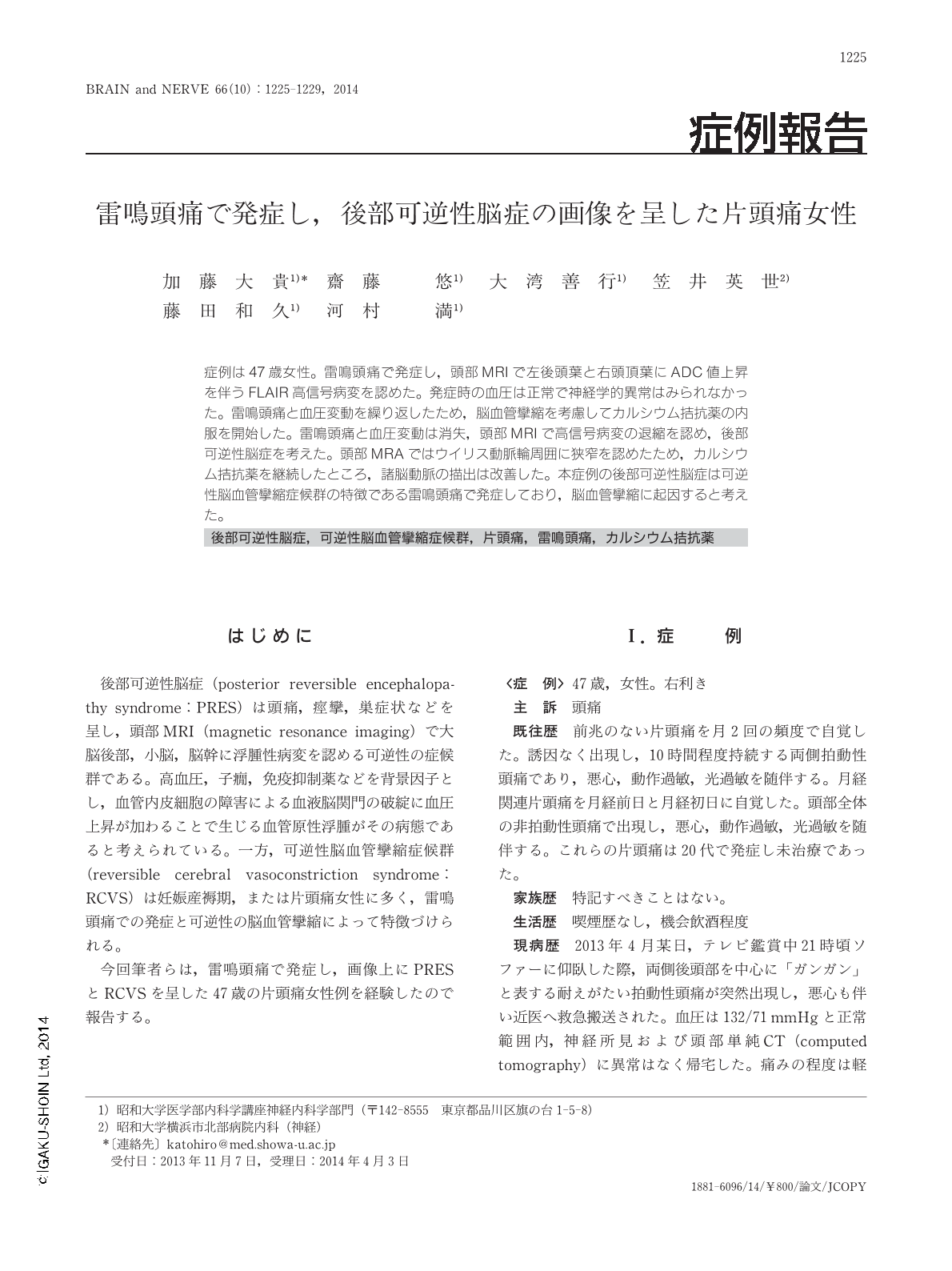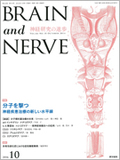Japanese
English
- 有料閲覧
- Abstract 文献概要
- 1ページ目 Look Inside
- 参考文献 Reference
症例は47歳女性。雷鳴頭痛で発症し,頭部MRIで左後頭葉と右頭頂葉にADC値上昇を伴うFLAIR高信号病変を認めた。発症時の血圧は正常で神経学的異常はみられなかった。雷鳴頭痛と血圧変動を繰り返したため,脳血管攣縮を考慮してカルシウム拮抗薬の内服を開始した。雷鳴頭痛と血圧変動は消失,頭部MRIで高信号病変の退縮を認め,後部可逆性脳症を考えた。頭部MRAではウイリス動脈輪周囲に狭窄を認めたため,カルシウム拮抗薬を継続したところ,諸脳動脈の描出は改善した。本症例の後部可逆性脳症は可逆性脳血管攣縮症候群の特徴である雷鳴頭痛で発症しており,脳血管攣縮に起因すると考えた。
Abstract
We report a 47-year-old woman who developed a thunderclap headache. Head axial, fluid-attenuated inversion recovery magnetic resonance imaging (FLAIR MRI) revealed high signal lesions in the left occipital and right parietal lobes. Apparent diffusion coefficient mapping showed a vasogenic edema pattern. Upon admission, the patient's blood pressure was normal and the neurological examination was unremarkable. As thunderclap headaches are associated with a repeated rise in blood pressure, we considered cerebral vasoconstriction and administered a calcium channel blocker. Thereafter, her headache with high blood pressure eased significantly and the high signal lesions on FLAIR MRI disappeared. We diagnosed the condition as posterior reversible encephalopathy syndrome (PRES). In addition, head magnetic resonance angiogram showed vasoconstriction of the right anterior cerebral artery, left middle cerebral artery, and bilateral posterior cerebral artery. Calcium channel blocker use was continued and vasoconstriction improved by day 70.
In this case, the presenting symptom was thunderclap headache, which is a characteristic feature of reversible cerebral vasoconstriction syndrome (RCVS). Therefore, PRES may be caused by RCVS.
(Received November 7, 2013; Accepted April 3, 2013; Published October 1, 2014)

Copyright © 2014, Igaku-Shoin Ltd. All rights reserved.


